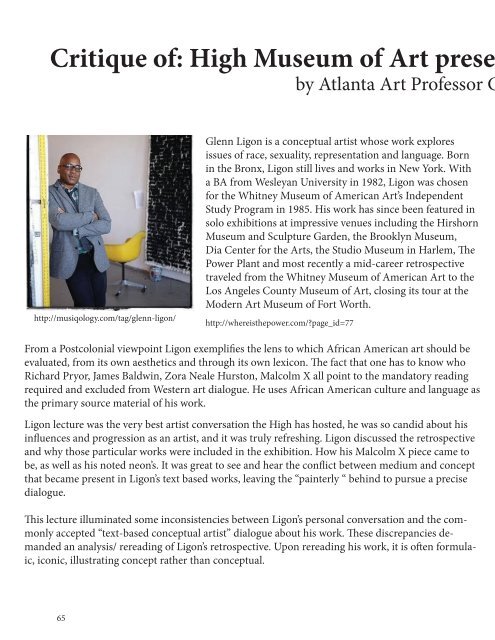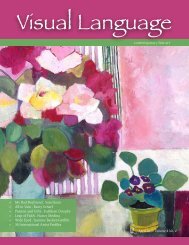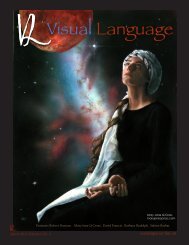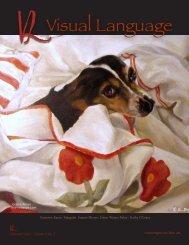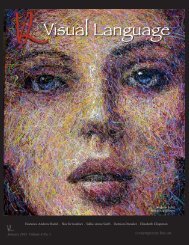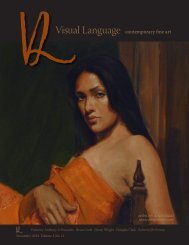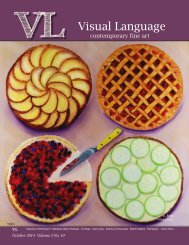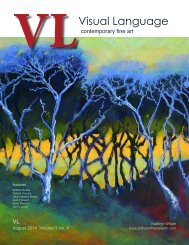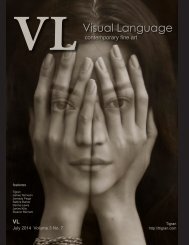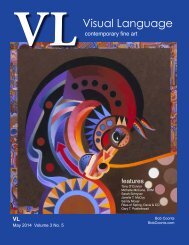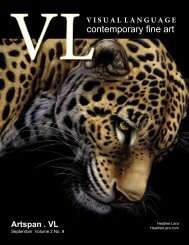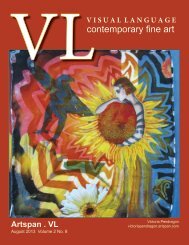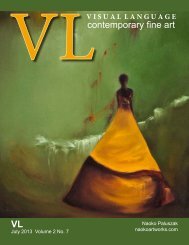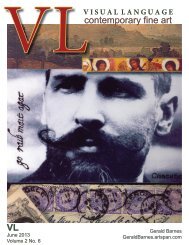Visual Language Magazine Contemporary Fine Art March 2013 Vol 2 No 3
Visual Language Magazine is a contemporary fine art magazine with pages filled with dynamic fine art, brilliant color and stimulating composition. Visual Language is the common connection around the world for art expressed through every media and process. The artists connect through their creativity to the viewers by both their process as well as their final piece. No interpreters are necessary because Visual Language crosses all cultures around the world.
Visual Language Magazine is a contemporary fine art magazine with pages filled with dynamic fine art, brilliant color and stimulating composition. Visual Language is the common connection around the world for art expressed through every media and process. The artists connect through their creativity to the viewers by both their process as well as their final piece. No interpreters are necessary because Visual Language crosses all cultures around the world.
Create successful ePaper yourself
Turn your PDF publications into a flip-book with our unique Google optimized e-Paper software.
Critique of: High Museum of <strong>Art</strong> prese<br />
by Atlanta <strong>Art</strong> Professor C<br />
http://musiqology.com/tag/glenn-ligon/<br />
Glenn Ligon is a conceptual artist whose work explores<br />
issues of race, sexuality, representation and language. Born<br />
in the Bronx, Ligon still lives and works in New York. With<br />
a BA from Wesleyan University in 1982, Ligon was chosen<br />
for the Whitney Museum of American <strong>Art</strong>’s Independent<br />
Study Program in 1985. His work has since been featured in<br />
solo exhibitions at impressive venues including the Hirshorn<br />
Museum and Sculpture Garden, the Brooklyn Museum,<br />
Dia Center for the <strong>Art</strong>s, the Studio Museum in Harlem, The<br />
Power Plant and most recently a mid-career retrospective<br />
traveled from the Whitney Museum of American <strong>Art</strong> to the<br />
Los Angeles County Museum of <strong>Art</strong>, closing its tour at the<br />
Modern <strong>Art</strong> Museum of Fort Worth.<br />
http://whereisthepower.com/page_id=77<br />
From a Postcolonial viewpoint Ligon exemplifies the lens to which African American art should be<br />
evaluated, from its own aesthetics and through its own lexicon. The fact that one has to know who<br />
Richard Pryor, James Baldwin, Zora Neale Hurston, Malcolm X all point to the mandatory reading<br />
required and excluded from Western art dialogue. He uses African American culture and language as<br />
the primary source material of his work.<br />
Ligon lecture was the very best artist conversation the High has hosted, he was so candid about his<br />
influences and progression as an artist, and it was truly refreshing. Ligon discussed the retrospective<br />
and why those particular works were included in the exhibition. How his Malcolm X piece came to<br />
be, as well as his noted neon’s. It was great to see and hear the conflict between medium and concept<br />
that became present in Ligon’s text based works, leaving the “painterly “ behind to pursue a precise<br />
dialogue.<br />
This lecture illuminated some inconsistencies between Ligon’s personal conversation and the commonly<br />
accepted “text-based conceptual artist” dialogue about his work. These discrepancies demanded<br />
an analysis/ rereading of Ligon’s retrospective. Upon rereading his work, it is often formulaic,<br />
iconic, illustrating concept rather than conceptual.<br />
65


